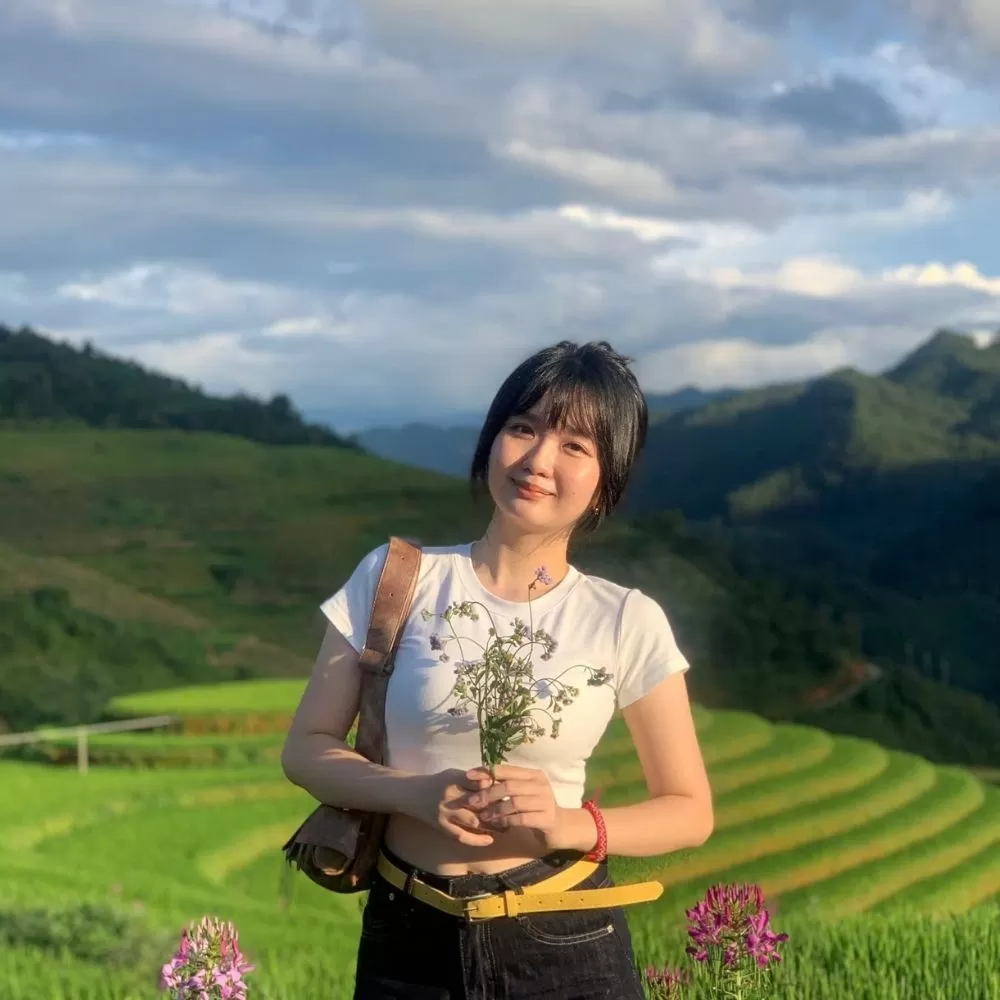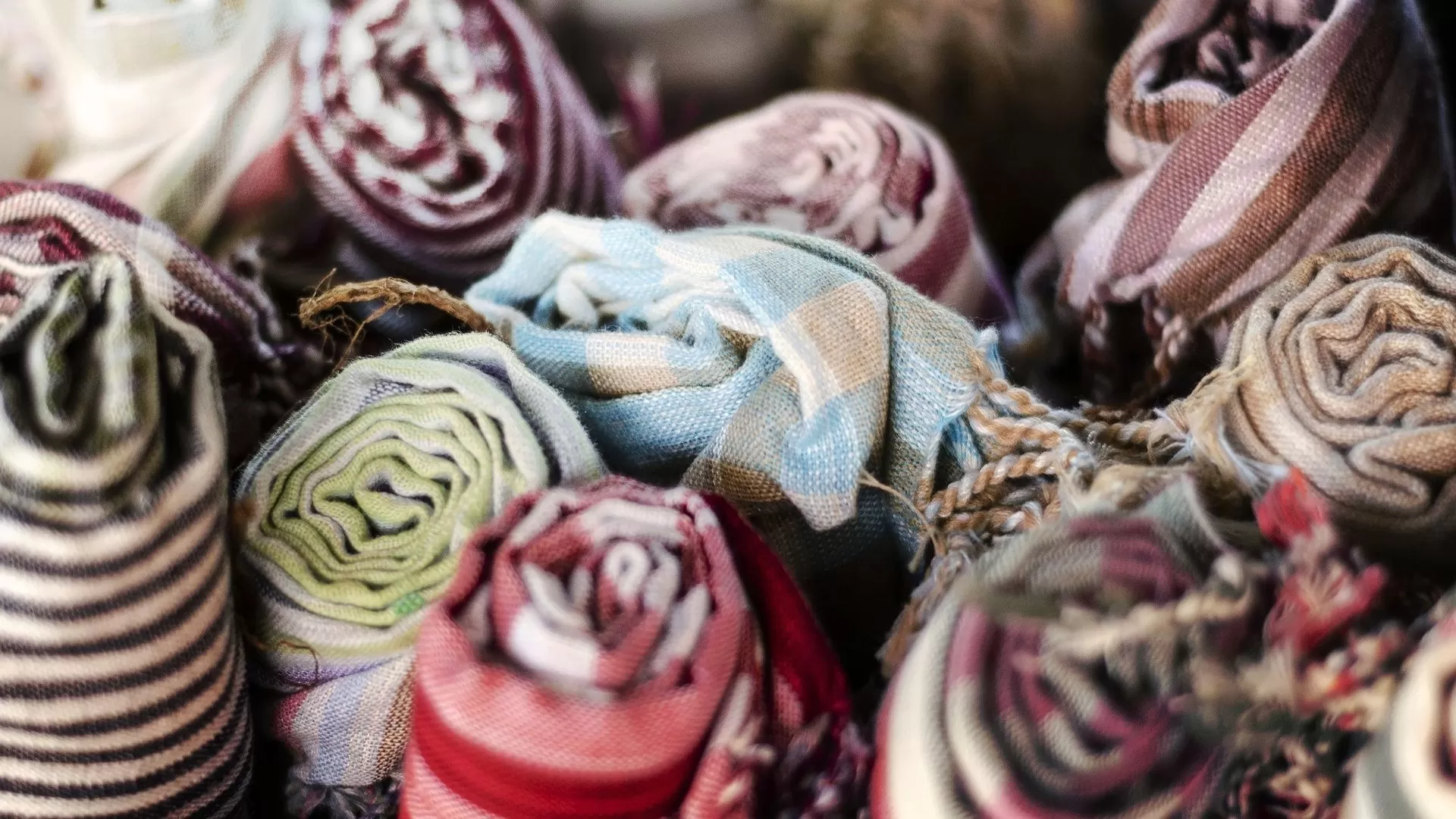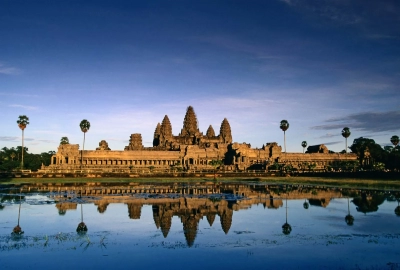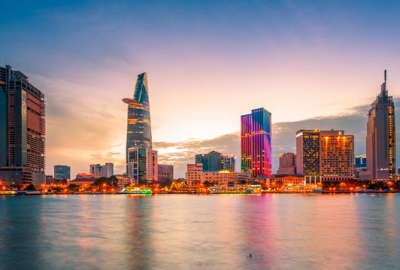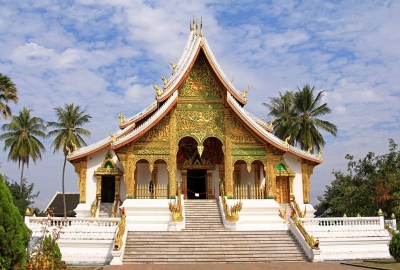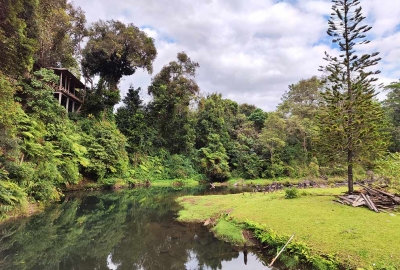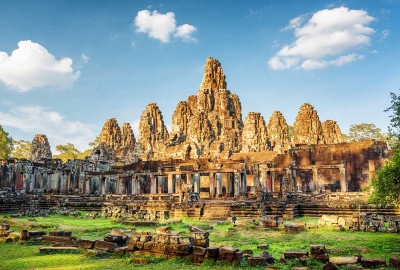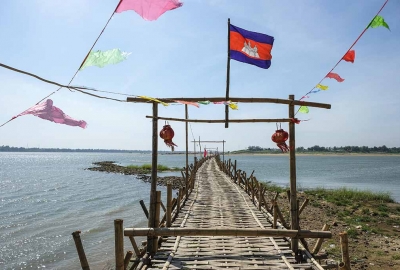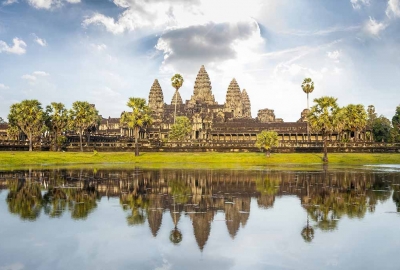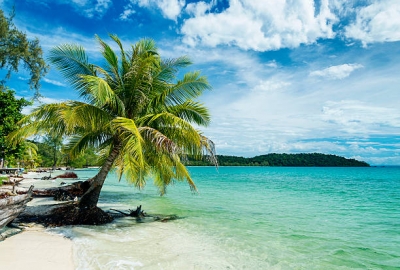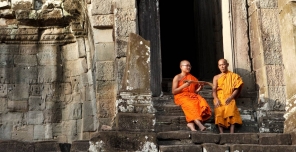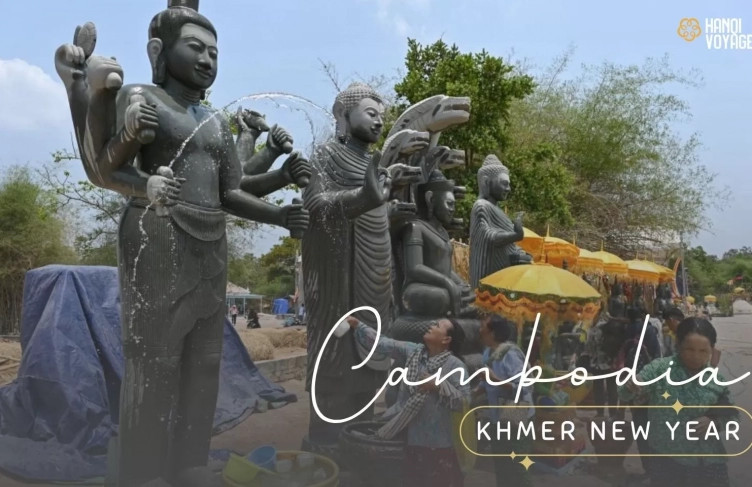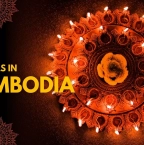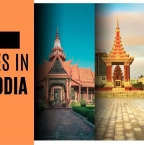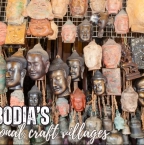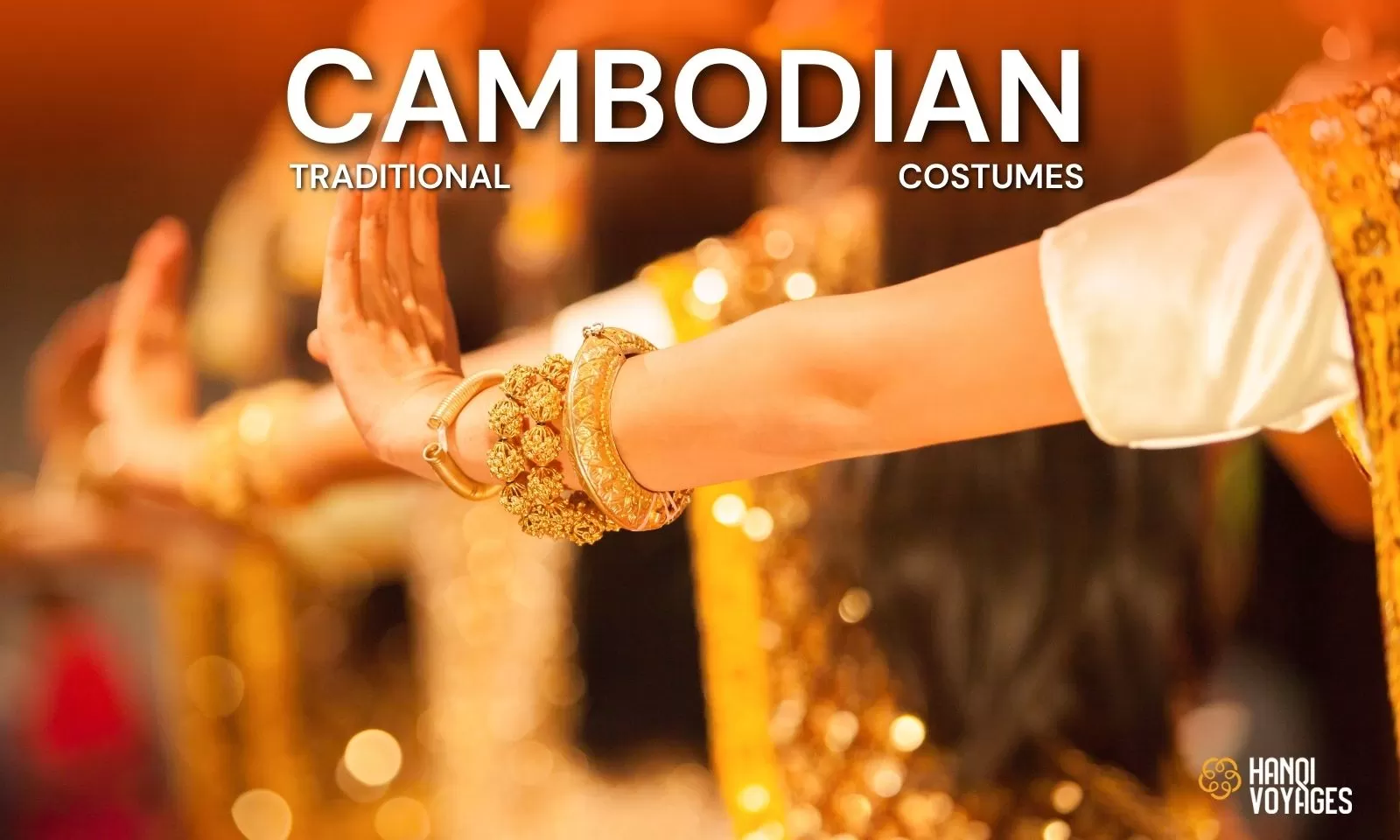
Exploring the unique beauty of Cambodian traditional costumes
The beauty of Cambodian traditional costumes lies in their rich symbolism and intricate craftsmanship. Worn for centuries, these garments represent Khmer history, status, and cultural identity, preserving a proud legacy. Let’s discover the timeless charm of Cambodian traditional attire!

Cambodia is among the few countries that preserve rich cultural traditions, including its traditional costumes. Worn during ceremonies, festivals, and daily life, they represent a blend of history, social status, and tradition, representing the pride of Khmer culture. Exploring Cambodian traditional costumes will not only deepen your understanding of Khmer heritage but also add a unique and enriching touch to your exciting journey.
Join us as we explore the beauty, meaning, and cultural values behind these timeless attire!
Table of Contents
Cambodian traditional costumes: An insight into their diverse styles
Cambodian traditional costumes hold deep cultural significance, representing history, social status, and artistic craftsmanship. Worn on various occasions, from daily life to grand ceremonies, these garments showcase the elegance and identity of the Khmer people. Below are some of the most iconic traditional dresses in Cambodia.
Sampot - Cambodia national costume
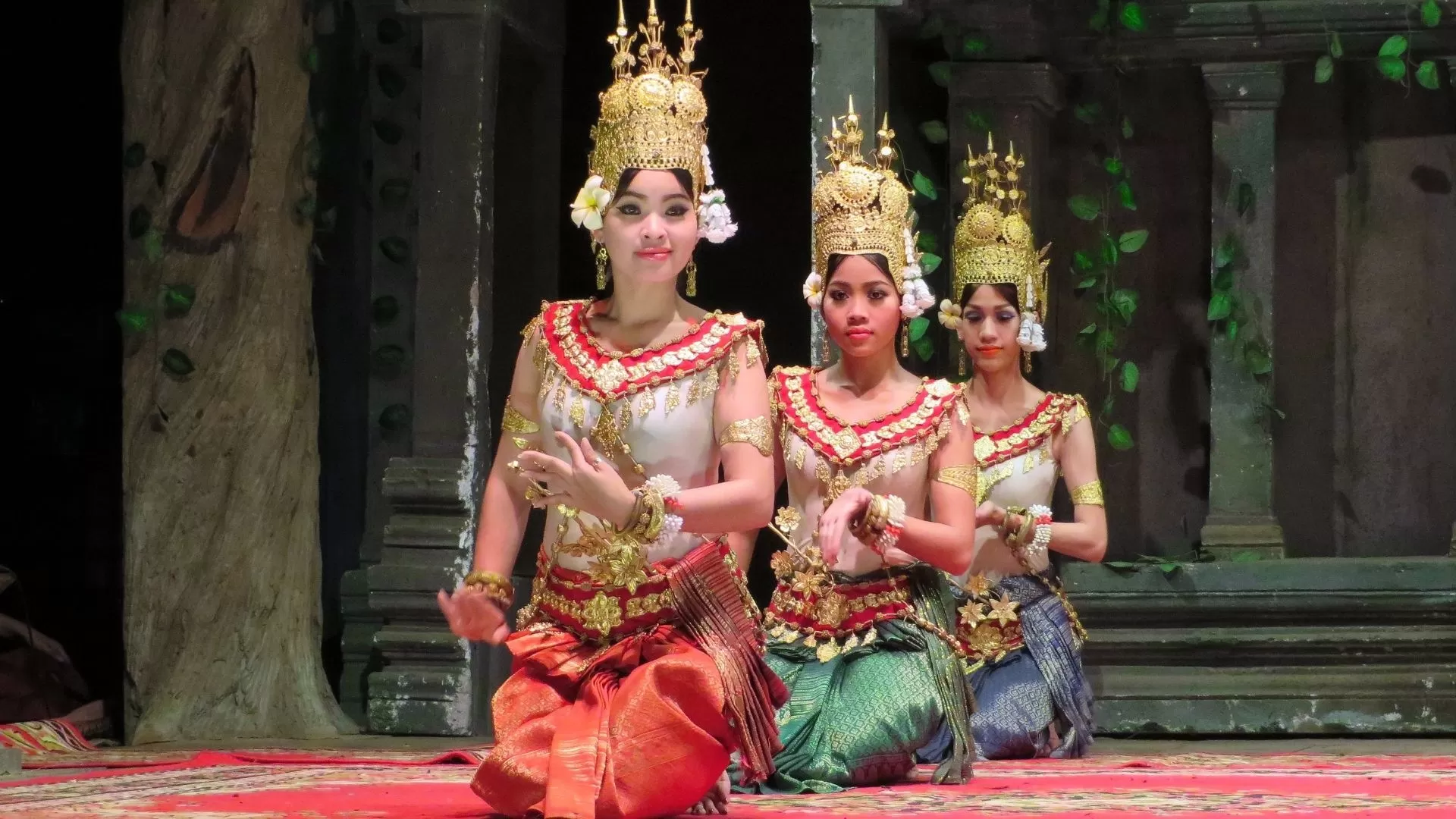 |
Material: silk, cotton, or other natural fabrics Meaning: a symbol of Cambodian identity and cultural heritage, representing: social status, khmer tradition, elegance & modesty and cultural pride. |
The Sampot is the traditional national costume of Cambodia, deeply rooted in Khmer heritage and culture. This elegant garment has been worn for centuries and remains a significant symbol of Cambodian identity. The Sampot dates back to the Funan Kingdom (1st–6th century), influenced by ancient Indian and Chinese cultures. It became an essential part of Khmer fashion, worn by both royalty and commoners, though in different styles and fabrics based on social status. There are several variations of the Sampot, each suited for different occasions and social classes
Sampot Phamuong
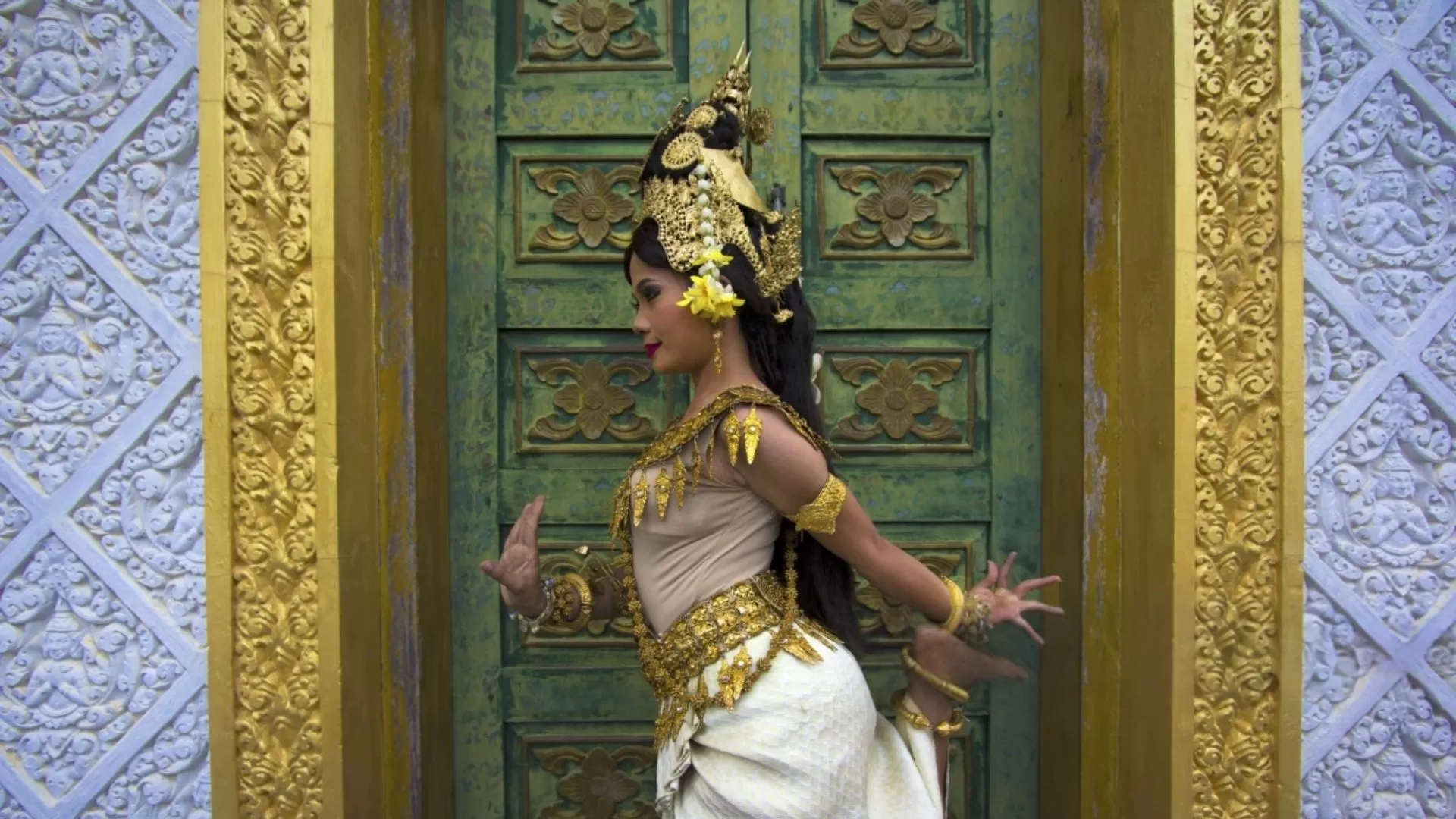
Sampot Phamuong is made from high-quality silk, often featuring intricate floral or geometric patterns. This fabric is traditionally handwoven, with some versions embroidered with gold or silver threads, adding a luxurious touch. It comes in a variety of rich colors, including deep red, royal blue, emerald green, and golden yellow, each symbolizing different meanings in Khmer culture.
Other useful information:
How to wear: A long silk fabric wrapped around the waist and secured with a belt, sometimes styled with pleats for a more formal look. Often paired with a silk blouse and jewelry.
When to wear: Sampot Phamuong is a symbol of elegance and tradition, worn on various special occasions by royalty, brides, traditional dancers, and women at special events like weddings and festivals.
Sampot Hol
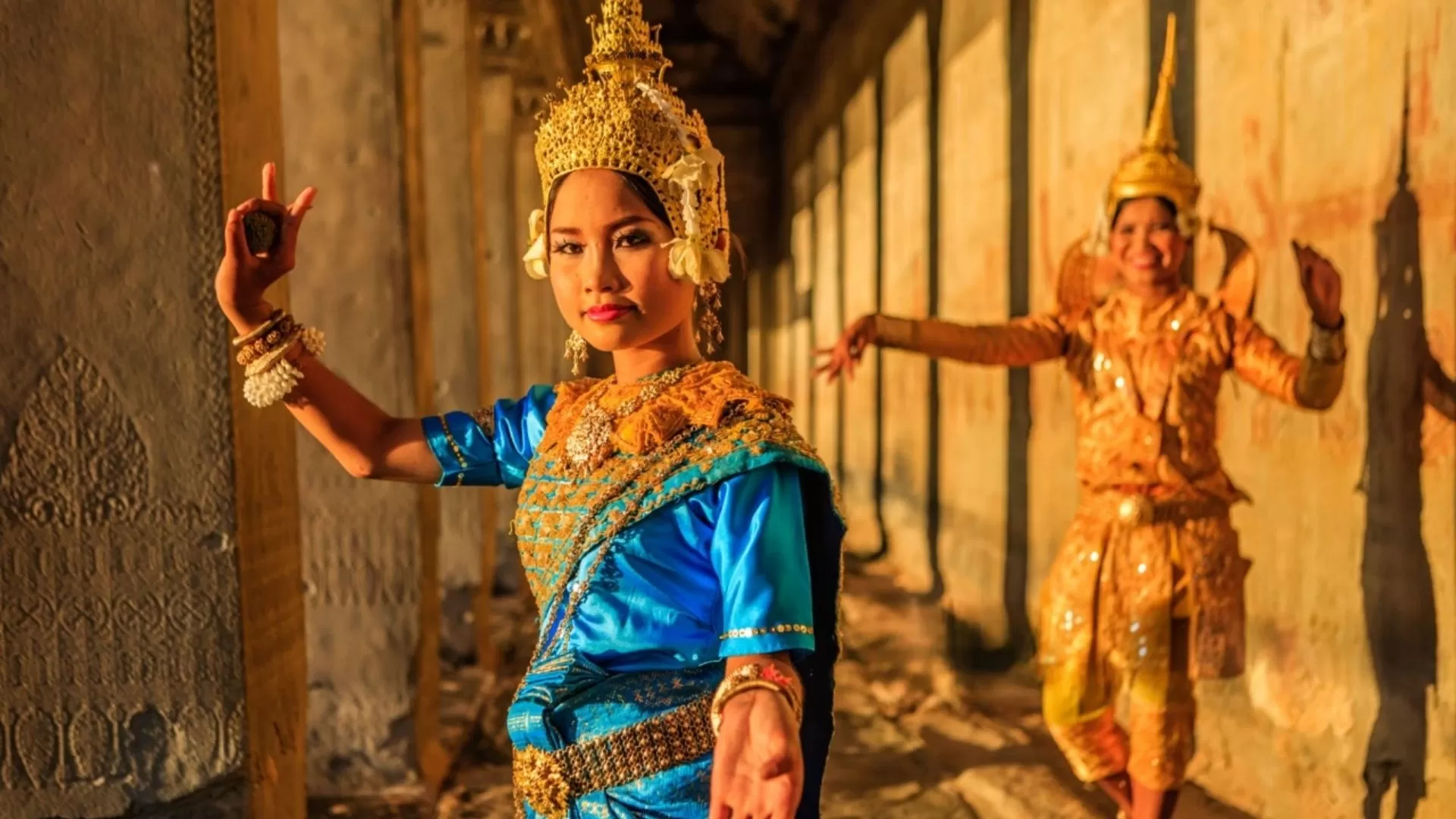
One of the most popular traditional dresses in Cambodia is Sampot Hol with two basic types: common dress and cross-woven dress. It is a wrap-around skirt made of silk, featuring complex designs created using the ikat technique. Sampot Hol is known for its vibrant and elegant color combinations, often featuring shades of red, gold, orange, blue, purple, brown and black. These colors are carefully chosen to create a striking visual appeal, with intricate geometric or traditional Khmer motifs woven into the fabric. Visitors can explore local markets and boutiques to admire or purchase this beautiful traditional attire during your Cambodia journey
Other useful information:
How to wear: Sampot Hol is a long piece of fabric wrapped around the waist and secured using a belt or special folding technique to keep it in place. Women also accessorize with gold or silver jewelry for a more refined appearance.
When to wear: Sampot Hol is one of Cambodian costumes for festivals often used in various traditional ceremonies, special occasions like dance performances, particularly the Apsara dance. Some women in rural areas still wear it as everyday attire.
Sampot Chang Kben
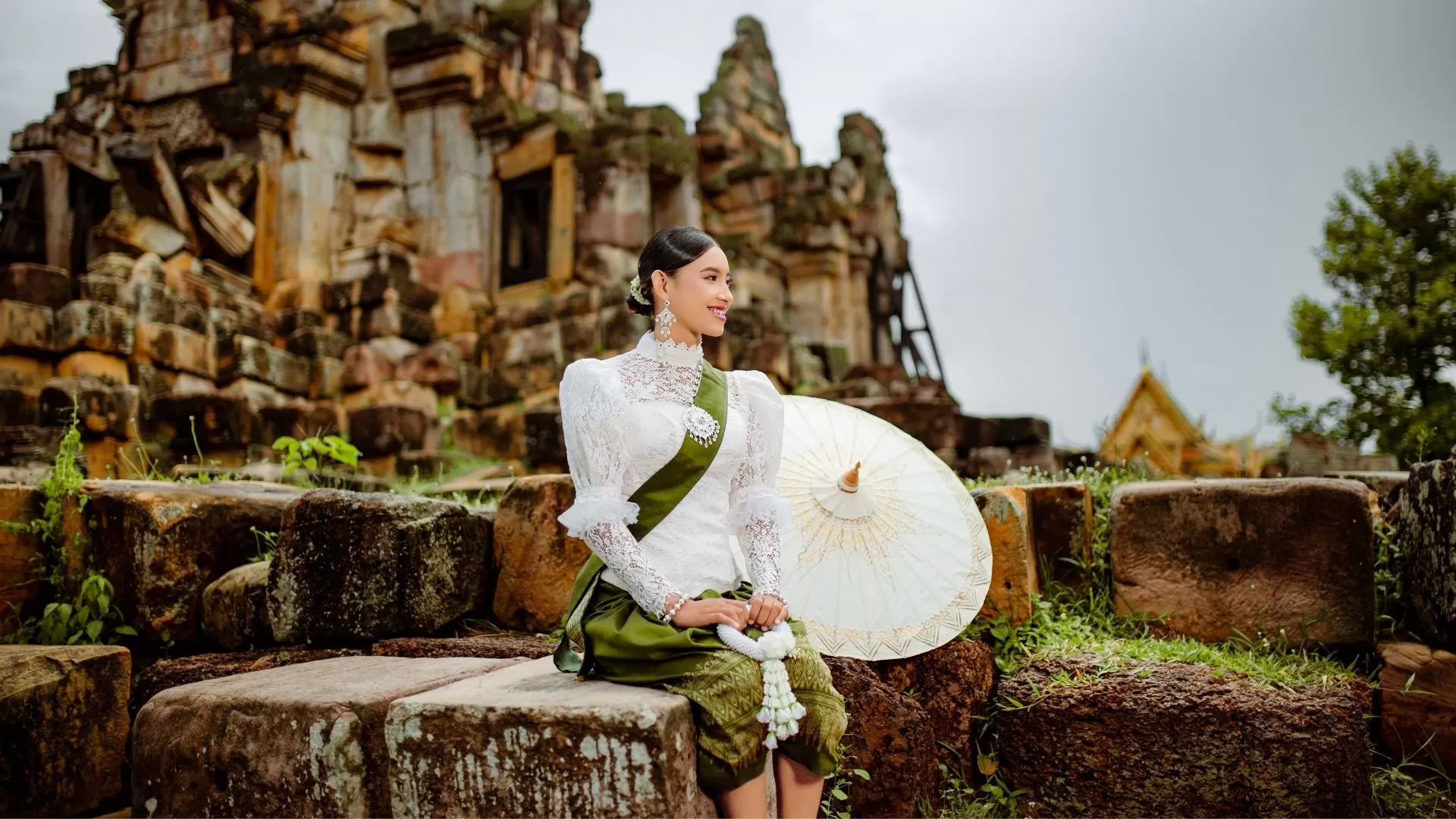
Sampot Chang Kben is a traditional Cambodian garment worn mainly by women, though men also wear a similar version. Unlike the wrap-around Sampot Hol, this attire is more like trousers, created by folding and tucking the fabric between the legs. Made from fine silk or cotton, Sampot Chang Kben is designed for both elegance and practicality. It often features rich colors such as red, gold, purple, blue, and brown, sometimes adorned with intricate patterns or floral motifs. The material is lightweight and breathable, allowing for ease of movement while maintaining a sophisticated appearance.
Other helpful information:
How to wear: The fabric, about three meters long, is wrapped around the waist and folded, pulled between the legs, and tucked at the back, resembling loose trousers. A belt or decorative sash is used to secure the garment in place. Typically paired with a formal blouse and jewelry for a complete look.
When to wear: Traditionally worn by royalty and nobility during the Angkor period. Nowadays, it is worn for formal events, weddings, and religious ceremonies. It is also commonly seen in classical dance performances and cultural celebrations. Some women still wear it as daily attire, especially in rural areas.
Krama - The iconic Cambodian scarf
Uses of Krama
|
|
Krama is a traditional Cambodian scarf that holds deep cultural significance. Made from cotton or silk, it is woven into a checkered pattern, typically in colors like red, blue, black, or white. The fabric is lightweight yet durable, making it suitable for both everyday use and special occasions.
Krama is worn daily by farmers, workers, and monks for its practicality, providing protection and comfort during various tasks. It is also an essential accessory during ceremonies, festivals, and traditional performances, symbolizing Cambodian heritage. In modern times, Krama has become a fashion statement and a popular souvenir, representing Khmer culture both locally and internationally.
Symbolism and history behind Cambodian traditional costumes
Cambodian traditional costumes are more than just clothing; they reflect the nation's history, culture, and social hierarchy. Rooted in centuries-old traditions, these garments symbolize elegance, status, and spirituality, influenced by the Khmer Empire and Hindu-Buddhist beliefs.
Each color in traditional Khmer attire carries specific meanings, often influenced by Hindu-Buddhist beliefs.
Gold/Yellow – Symbolizes royalty, prosperity, and sacredness.
Red – Represents power, passion, and vitality.
White – Associated with purity and spiritual devotion.
Green/Blue – Reflects nature, harmony, and peace.
Apsara costumes – Worn in classical dance, symbolizing divine beauty, grace, and Cambodia’s rich mythology.
Krama – A symbol of Khmer resilience and practicality, used for both daily life and national pride.
| ROLE OF CAMBODIAN TRADITIONAL COSTUMES IN CAMBODIA SOCIETY |
|
Cambodian traditional costumes: Where to see and experience
If you want to immerse yourself in traditional clothing culture for your trip to Cambodia, there are many ways to experience it firsthand:
Explore local markets: Visit traditional markets like Phsar Chas (Old Market) in Siem Reap, where you can see locals wearing traditional attire, browse various fabrics, and even purchase your own Cambodian garments.
Watch a traditional dance performance: Attending an Apsara dance show or other cultural performances allows you to admire the intricate beauty of Cambodian traditional costumes in motion, as performers showcase elegant silk dresses and elaborate accessories.
Visit a silk farm: Discover the art of silk weaving at places like Angkor Silk Farm, where you can witness the entire process of making silk and transforming it into luxurious Cambodian attire. Many farms also offer authentic silk clothing for purchase.
Experience a traditional wedding: If you have the opportunity, attending a Cambodian wedding is an excellent way to see traditional clothing in a real cultural setting. Brides and grooms often wear elaborate outfits, adorned with intricate embroidery and gold accents.
Explore museums and cultural centers: Learn about the history and significance of Cambodian traditional attire at museums like the National museum of Cambodia in Phnom Penh. These exhibits showcase antique garments, royal attire, and textiles, providing deeper insights into the country’s heritage.
Try a traditional dress-up experience: Many photography studios and cultural villages in Cambodia offer the chance to dress up in Khmer traditional clothing, such as the iconic Sampot or Apsara costume, for an unforgettable cultural experience and photo session.
Cambodian traditional costumes are a reflection of the nation’s rich heritage and cultural identity. Through intricate designs and deep symbolism, they continue to play a vital role in ceremonies, daily life, and national pride. Immerse yourself in Cambodia’s cultural elegance with Hanoi Voyages today!
Dream about your trip to Asia, in private
We are here to make it happen with youFREE QUOTE, WITHOUT OBLIGATION

